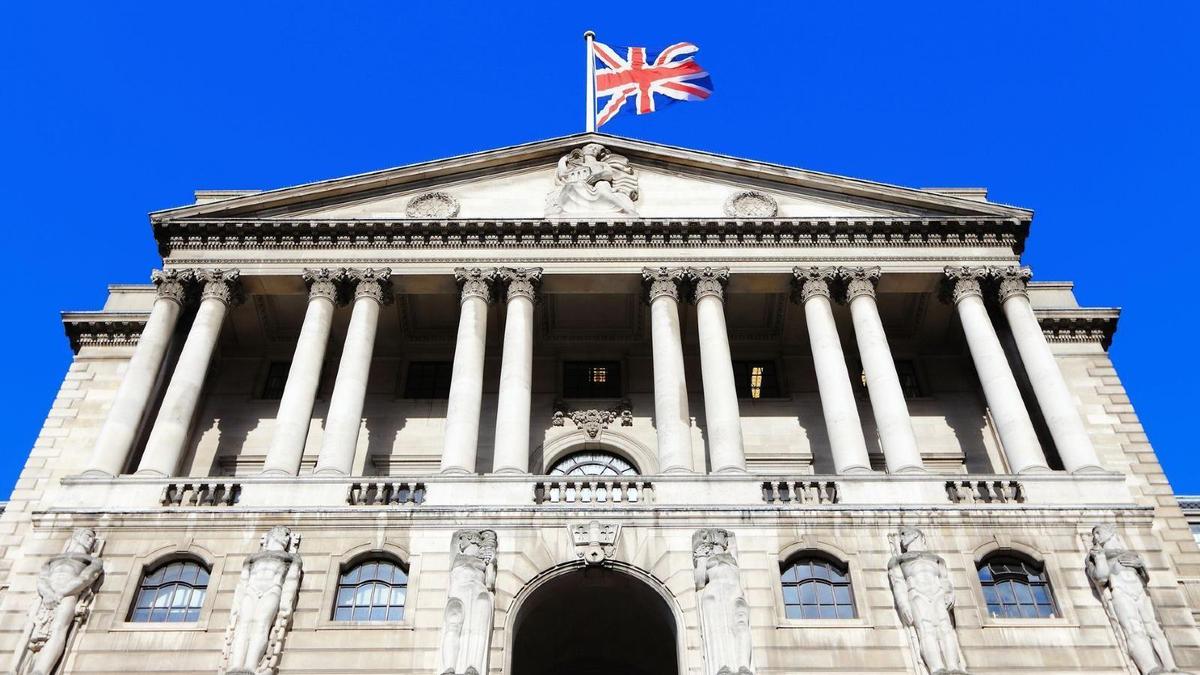Bank of England Cuts Interest Rates for First Time Since Pandemic
01.08.2024 15:44 1 min. read Alexander Stefanov
The Bank of England has lowered interest rates for the first time since the onset of the pandemic, reducing the base rate to 5%.
This marks a shift from a year of steady rates, decided by a close vote within the central bank’s policy committee.
Governor Andrew Bailey, casting the deciding vote, indicated that easing inflationary pressures prompted the cut. Despite this, he cautioned against expecting further significant reductions soon.
The decision comes as the UK faces ongoing cost-of-living challenges and follows a recent drop in inflation to the Bank’s 2% target. The pound weakened against major currencies after the announcement.
The Bank’s forecast suggests inflation might briefly exceed 2% but is expected to fall back to around 1.7% in two years. Economic growth has recently surpassed expectations, although the Bank anticipates a slower rate in the near future.
The central bank emphasized that, despite this rate cut, monetary policy will remain restrictive to ensure inflation control and economic stability.
-
1
Tariffs Threaten to Stall U.S. Growth in 2025, Recovery Not Expected Until 2026
07.06.2025 13:00 1 min. read -
2
Push for Rate Cuts Fuels Speculation Over Powell’s Successor
08.06.2025 8:00 1 min. read -
3
Billionaire Slams Meme Stock Hype and Sounds Alarm on U.S. Fiscal Health
15.06.2025 18:00 2 min. read -
4
Robert Kiyosaki Predicts 2025 “Super-Crash,” Urges Hoarding Gold, Silver, and Bitcoin
23.06.2025 13:31 2 min. read -
5
Billionaire Investor Sees Dollar Crash If Key Support Breaks
18.06.2025 15:00 1 min. read
U.S. National Debt Surge Could Trigger a Major Crisis, Says Ray Dalio
Billionaire investor Ray Dalio has sounded the alarm over America’s soaring national debt, warning of a looming economic crisis if no action is taken.
Recession Fears Linger as Economic Signal Flashes Long-Term Warning
Despite a recent shift in sentiment suggesting the U.S. economy might dodge a recession, key forecasting tools are telling a different story.
Russia’s Oil Revenues Strained as Exports Decline Again
Russia’s oil exports took another hit last week, undermining gains from rising global prices as shipment volumes slipped for the second week in a row.
Putin Cornered as Iran Calls for Help After U.S. Strikes
As tensions erupt in the Middle East following U.S. strikes on Iranian nuclear facilities, Tehran has turned to Moscow for support.
-
1
Tariffs Threaten to Stall U.S. Growth in 2025, Recovery Not Expected Until 2026
07.06.2025 13:00 1 min. read -
2
Push for Rate Cuts Fuels Speculation Over Powell’s Successor
08.06.2025 8:00 1 min. read -
3
Billionaire Slams Meme Stock Hype and Sounds Alarm on U.S. Fiscal Health
15.06.2025 18:00 2 min. read -
4
Robert Kiyosaki Predicts 2025 “Super-Crash,” Urges Hoarding Gold, Silver, and Bitcoin
23.06.2025 13:31 2 min. read -
5
Billionaire Investor Sees Dollar Crash If Key Support Breaks
18.06.2025 15:00 1 min. read


